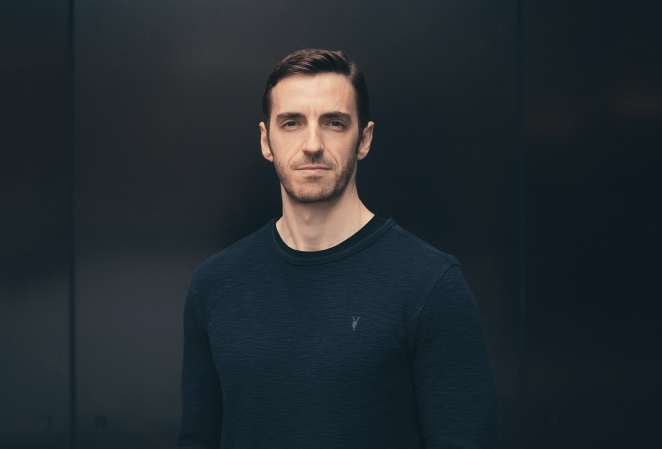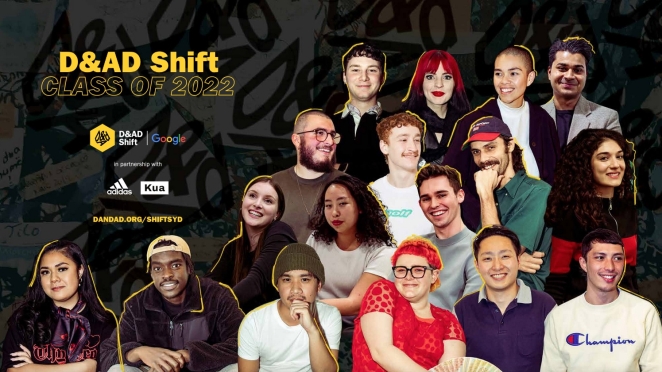Ian Wharton served as part of the creative leadership for design and innovation agencies in WPP and Publicis Groupe. He is the Founder of health technology startup Aide Health, an advisor at Justified Studio, the author of Spark for the Fire: How youthful thinking unlocks creativity, and the Resident Executive Creative Director of D&AD Shift.
In light of the Labour Party’s questioning of the government’s approach to the arts in schools, accusing them of “stifling children’s creativity”, Ian explores how the arts have been consistently deprioritised from the national curriculum over the past decade and explain why pursuing creativity before ‘professional life’ can bring a myriad of benefits and life skills.

Creative education is imperfect and in continual need of reappraisal to meet the times. Its challenges lie in the contradiction of nurturing original, conceptual and critical thought within a traditional model of education that is a product of the industrial age—one that prioritises uniformity, efficiency and quantitative academic assessment. These imperfections, which can quietly dissuade the creative process, are not inevitable, and we have new approaches today that are proof.
How we prepare people to enter the creative workforce deserves our attention. The industry is substantial in its impact, contributing over £100bn to the UK economy annually and consistently outperforming all other sectors. Design and advertising represent £4bn in export value, and film and tv generate £3bn in inward investment. It has also rebounded well from the pandemic.
But this industry is so much more; it drives our cultural identity, guides how and where society places its next step and offers us the tools to reflect upon changes that occur or need to. Its potential is echoed in young people's desire to participate. After learning about available jobs, 88% of those aged 11+ consider a creative career. And yet, it remains a sector weary from underfunding.
Over the past 20 years in the creative industry, I have spent thousands of hours with creative students and teachers across the country. Today, even with my feet more in the world of venture-capital-backed startups where the sonnets of university drop-out success are proudly piped, I remain convinced that the time spent in deliberate exploration of creativity before 'professional life' is of immeasurable value.
This process should begin at 11+ years, but it doesn't. The arts have been consistently deprioritised from the national curriculum over the past decade, most notably in their absence from the 2010 English Baccalaureate (Ebacc). Yes, that decision is still worth discussing; 72% of secondary school teachers have reported a decline in attainment in Art and Design.
Knowing that attempts to turn the tides of tragic choice-making in government are unproductive, we should focus more strategically on where creative exploration mainly takes place today. With 2.8m students enrolled last year, despite its escalating cost, that place is in higher education.
The challenge for higher education

Liam Anslow
Designing university curricula to provide an environment that can satisfy the creative industry—let alone agitate it from slumber or myopia—is far from simple. Some universities are outstanding at doing this; Arts University Bournemouth, Falmouth University and Ravensbourne University, to name a few. But heavy is the head for those leading their efforts.
Consider a course leader's burden. They are accountable for securing funding where there is a dependence on grades to demonstrate their effectiveness. This relies on standardised evaluation, which is ill-suited to the complexity and subjectivity of creative works.
It also leads to an overemphasis that formal qualifications are the primary goal of higher education. And yet, there is little to no market demand for credentials. I have never been asked what I was graded in my degree, nor have I ever asked that question to support a hiring decision. And what do those grades represent? Is it someone's taste?
If so, whose and with what definition? Is it proficiency in tools and software? Those tools change every year. The better parts of the industry, those known for building high-performing teams and surviving the scrutiny of truly nurturing talent, do not make their judgements on something so narrow.
So why isn't higher education evolving more rapidly? Perhaps partly, for those who want to implement change, many will struggle with institutional inertia and the energy required to convince boards or trustees to adopt and invest in new methods.
Suppose today we confront reality: education needs to be more adequately designed to prepare new generations for an industry of vital importance. In doing so, let us look towards new approaches for lessons in reinvention.
One example is D&AD Shift, a free night school for self-taught creatives entering the industry from outside traditional pathways. Launched in 2016, the programme provides opportunities to talented, underrepresented individuals without formal training. It bears little resemblance to a degree, but it works—72% of graduates get a job in a relevant creative field.
Soham Chatterjee
I will hasten to add that it is not the only answer; the London cohort each year accommodates only around 20 people, and 270,000 people applied for creative degrees in the UK last year. But it gives us the following four learnings that can strengthen all creative education and produce graduates who are well-placed to excel in all the ways we need them to.
1. Emphasise multidisciplinary talent
Creative education should be a celebration of discovery. If we are producing creative graduates with a single skill, we are failing them. Specialisms are precarious. They have been since the advent of the internet and are more so today than ever.
We need creative people who can turn their hands to unforeseen technology, markets and customer/audience expectations. People who are comfortable exploring their full creative breadth. These people are more efficient, exciting and better equipped to thrive through change.
Specialism-producing education also assumes students already know what they do best or what they love doing the most. This is inaccurate and limiting. When have they had the time or freedom to identify that? It is seldom offered once they are in the market professionally.
Shift, on the other hand, is open and ambiguous learning. Its students are subjected to a more complete picture of the commercial creative world and find their 'home' as they move through that experience. They see the roles of design, digital product, marketing, production and beyond. Career decisions are made with more data.
In doing so, it fosters an ability to communicate across departments, to be confident in serendipitous collaboration and see paths beyond joining a creative agency as their next stop. Many 'Shifters' want to start something of their own or create IP. These are good things.
Educating students to be multidisciplinary does not mean devaluing craft ability. Quite the opposite—it means giving students the chance the discover where there is more natural proficiency or desire to excel in creative execution. People would not be wrong to argue that hiring one or two lecturers with a range of experience to fulfil that role on a single university course is hard, near impossible. The solution is simple, a more deliberate relationship with the industry.
2. Industry joint venture
There are no department heads or CEOs in the creative industry who don't want to support the outcome of education. Some are just better at operationalising it than others. I contend that any inaction is for no reason other than the bystander effect—an assumption that the job is already being done by someone else.
So what should the nature of that relationship be? A field trip to a London design firm does not count. There needs to be a close, intertwined collaboration that's looked upon as a joint venture, with both parties being responsible for the 'profits' and costs. The industry (as beneficiary) and educators must hold the view that it's an equal duty of care.
Shift facilitates this better than any other programme and any degree. Students work on live real-world briefs set by industry partners and are graced with access to the client. The curriculum is up to date, meets the pace of change in the industry and signals the practical skills required today. Some caution is warranted in this model; the industry is often guilty of self-generated distractions like the virtual folly of the metaverse.

But, every Shift student is provided with an industry mentor and placement support, which more than cancels out such dangers. D&AD conducts this deep sense of service to creativity with a deceptively small team. For higher education, the role of the educator will be critical in translating industry knowledge into learning programmes.
A reasonable question may be how such involvement can fit into the obligations of industry professionals. In part, it comes down to the structure and duration of the education.
3. Accessibility and flexibility
Shift is short but intensive. The programme is a 5-month-long night school delivered over 120 hours. Seeing the programme in action raises the question: when was the last time we asked why creative education in England is three years long? Is it just something we accept as 'the way'? Three-year higher education has evolved since the 1800s as a practical balance between providing comprehensive education and the financial constraints of students and institutions.
Does that still ring true today? Perhaps not. A three-year course that doesn't have the agility to accommodate changing needs mid-flight will hold graduates back. A timely example, you will be hard-pressed to find a meaningful exploration of generative AI and its potential in any creative curriculum today.
Of course, doubters will contend that shorter course durations give less time to learn and hone craft, producing less valuable graduates for employers. I think that sells the ambition of young people and their capacity for private enterprise short. Just watch the Spider-man trailer recreation below by a 14-year-old made using open-source 3D software.
As a part-time night school, Shift also provides flexibility and greater access for students from diverse backgrounds and perspectives. Something the industry sorely needs. It also makes contributing industry time easier. And, importantly, it is free.
The average degree today will indebt students to the sum of £27,000. We shouldn't be quick to blame institutions for this cost. Creative education and its requirements on square footage, technology and materials are not cheap—many university courses subsidise native enrolment with international fees.
That being said, maybe these new models offer alternative ways to cover those costs. That's where alumni fit in.
4. The power of alumni
When I left university, I left. I have had little to no exchange with the institution since, and I'm not alone. Student relationships have also faded bit by bit with each passing year. This is partly my failing. I see successes on LinkedIn and cheer from the sidelines, but that's really it. Graduating classes are an untapped potential for advanced, accelerated post-diploma learning and collaboration. And perhaps, an alternative way to begin building commercial acuity or financing part of the education itself.
Shift builds and fosters alumni groups. It is not an afterthought or a newsletter. The expectation of onward opportunities, Shifter partnerships and the sharing of their real-world guidance is built into its DNA. Feedback is regularly sought from the programme, and these groups foster a culture of 'giving back'. It does this through the simplest of infrastructure and technology, but it does it with intent.
With such a platform, a radical model can exist for programmes to be self-funded and revenue-generating. Alumni groups like those from Shift are composed of young, talented people with direct knowledge of what a notoriously difficult-to-engage-with market actually desires. Plus, access to it. They can support campaign development, new product development, and the research and insights companies spend millions of pounds procuring, often badly.
Creating small, commissionable, year-long commercial spinout vehicles of alumni—with market-rate salaries for those employed—as a 'next step' and where profits go back to the programme for next year's funding is entirely achievable. The world of 'venture builders' undertakes things much more complex, with significantly more risk, all the time.
This is also common practice in the life sciences. Hundreds of university spinouts are produced each year by Oxford and Cambridge Universities, which have raised roughly £10bn of investment in the last decade and generated a wealth of intellectual property. They, too, are imperfect; they can be met with their own bureaucracy or award founders absurdly low equity.
But universities, creative or otherwise, are commercial enterprises at their core; why not supplement them with something that benefits all parties? Commercial studios and the licensing of IP generated during creative studies are just two possibilities of many. An openness to change in the fundamental model of creative education unlocks these avenues for testing, at the very least. Not simple, but doable.
Final thoughts
In the mid to late 19th century, a move toward standardised education mirrored the needs of an industrialising society. Punctuality, following directions, and basic literacy and numeracy were the valued skills for factory work, the dominant workplace of the time. Even today, the fingerprints of traditional education are present in how we structure and evaluate the teaching of creativity.

David Stubbs
If you believe you or your employer is doing enough to make the changes needed, do more. It is entirely in the control of the industry. Find an institution and work with them. At the very least, support and examine alternative programmes like D&AD Shift, Roundhouse Works and Brixton Finishing School. If you are an institution, look at your courses, look at your relationship with the industry, look at the delivery of your teaching and ask what can be changed or experimented with. And know that there are people in the industry willing to help, whatever it takes.
Creative people are driven to appraise the way things are, produce a hypothesis for improvement and move forward, ready for validation or learning from failure. How we effectively educate these people can be improved if we follow the very nature of reinvention that we hope it fosters.




